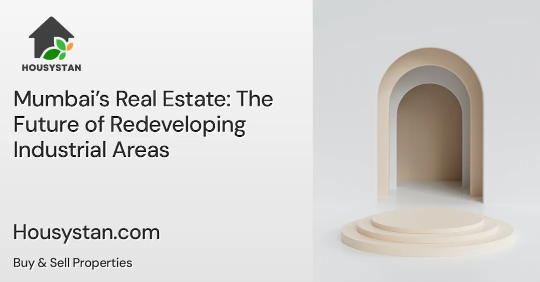Mumbai’s Real Estate: The Future of Redeveloping Industrial Areas
Read latest blogs and articles from Housystan

The Information mentioned here was last updated on:
31/12/2025Mumbai’s Real Estate: The Future of Redeveloping Industrial Areas
Mumbai, the financial heartbeat of India, stands at a pivotal juncture in its urban evolution. As the city’s population continues to surge and economic activities diversify, the focus has shifted toward the transformation of aging industrial zones into thriving residential and commercial hubs. The redevelopment of industrial areas in Mumbai is not merely a trend—it is rapidly becoming a strategic necessity, promising to redefine the city’s skyline and enhance its global stature.
Over the years, many industrial pockets in Mumbai, such as Lower Parel, Worli, and Byculla, have undergone significant metamorphosis. These districts, once home to mills and factories, are now hotspots for premium housing, sophisticated office complexes, and cultural landmarks. The shift is fueled by Mumbai’s limited land resources and the increasing demand for modern infrastructure. Developers and investors recognize the immense potential in converting underutilized industrial plots into mixed-use developments, offering state-of-the-art amenities and improved connectivity.
- Verified Tenants/Buyers
- Unlimited Property Listing
- Zero subscription/charges fee
This urban transformation is supported by progressive government policies and incentives aimed at streamlining redevelopment permissions and encouraging sustainable construction. The Maharashtra government’s initiatives, such as revised floor space index (FSI) norms and single-window clearance systems, have accelerated project approvals and attracted significant investments from both domestic and international players.
Redeveloping Mumbai’s industrial areas also creates substantial economic opportunities. It generates numerous job openings in construction, real estate, and ancillary services while boosting the city’s property values. Enhanced public infrastructure, green spaces, and upgraded utilities further contribute to a higher quality of life for residents and professionals alike.
As Mumbai continues to embrace innovative urban planning, the future of its real estate lies in the successful repurposing of industrial regions. These dynamic neighborhood transformations are set to establish Mumbai as a benchmark for sustainable metropolitan growth. For investors, homebuyers, and businesses, the redevelopment of industrial areas represents a golden opportunity to be part of Mumbai’s next chapter of progress and prosperity.